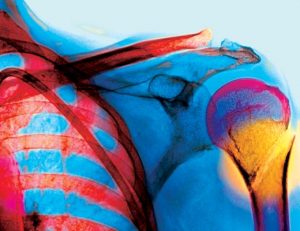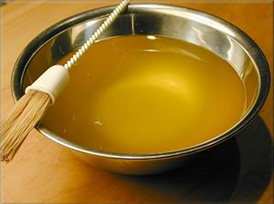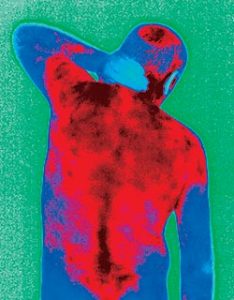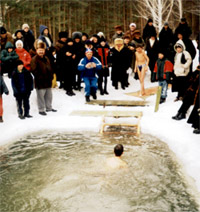Insidious sinusitis
 Inflammation of the maxillary (maxillary) sinuses is a common disease, due to the peculiarities of the anatomical structure (unfavorable conditions of outflow from the sinuses) and the possibility of infection from the teeth.
Inflammation of the maxillary (maxillary) sinuses is a common disease, due to the peculiarities of the anatomical structure (unfavorable conditions of outflow from the sinuses) and the possibility of infection from the teeth.
Most often, sinusitis is observed during the period of mass spread of influenza and other colds, and in children this disease may be associated with measles, scarlet fever, chicken pox and other infectious diseases. The penetration of the infection is usually carried out through the nose, blood and aching teeth, or is the result of trauma with a violation of the integrity of the sinus wall.Reduced body resistance, features of the anatomical structure, which hinders the outflow of inflammatory fluid from the sinuses, inappropriate treatment of the original disease – all these factors contribute to the occurrence of sinusitis, make it heavier and lead in some cases to the transition of acute sinusitis to chronic.
In sinus, one sinus or both can be affected; along with the maxillary, other paranasal sinuses can also be involved in the process – the ethmoid labyrinth, frontal and main sinuses.
Depending on the severity of the clinical manifestations of the disease and morphological changes in the walls of the maxillary sinuses, catarral and purulent forms of acute sinusitis are distinguished. The clinical form of acute sinusitis is quite characteristic, but it should be remembered that this disease often occurs in a blurred form.
Symptoms of sinusitis
In acute sinusitis, headache is usually noted, localized in the frontal regions and aggravated by tilting the head down, sneezing or coughing, prolonged rhinitis with profuse mucous or purulent nasal discharge, fever up to 37.5 – 38 ° C, malaise, weakness. Sometimes there is a slight swelling of soft tissue in the anterior wall of the affected sinus, swelling of the lower eyelid. Often there is a decrease in smell, and sometimes its complete loss. Some patients feel a putrid odor, which may be an indirect sign of a purulent form of the disease.
At statement of the diagnosis and especially at definition of a form of a sinusitis X-ray inspection is of great importance; the most informative is a picture taken in the patient’s chin-nasal position. On radiographs of the paranasal sinuses in a patient with sinusitis, there is usually a decrease in filling of the affected sinus with air, a horizontal level of fluid in the sinus is often detected (with an x-ray in the patient’s vertical position), sometimes there is a marginal darkening of the sinuses, which indicates a parietal thickening of the mucous membrane. Of great importance in the diagnosis and treatment of sinusitis has a puncture of the maxillary sinus, which produces the otorhinolaryngologist.
Chronic sinusitis is characterized by more pronounced morphological changes in the mucous membrane of the maxillary cavity, and the process often reaches the deep layers of its wall. The nature of these changes varies with different forms of chronic antritis, among which the main ones are catarrhal, purulent, and polyposis.
The subjective manifestations of chronic sinusitis are much less pronounced than in acute sinusitis. The headache is usually mild, without clear localization, more often the patient is worried about the feeling of heaviness in the head. There is rapid fatigue, especially in mental work; nasal breathing is often disturbed, sometimes patients indicate the appearance of a “stuffiness” in the prone position, usually more pronounced on the side of the affected sinus. Nasal discharge may be mucous or purulent, depending on the form of chronic sinusitis. Sticking discharge, irritating the mucous membrane of the pharynx, cause a number of unpleasant sensations inherent in chronic nasopharyngeal catarrh – sore, sore throat when swallowing, dryness. Sometimes these complaints in patients with chronic sinusitis are major. With bilateral sinus, especially with its polypous form, smell is often disturbed.
The chronic process is often asymptomatic and may be an accidental finding during an x-ray examination of a patient or manifest itself when exacerbated by the same symptoms as acute sinusitis.
Sinusitis can be not only a serious independent disease, it often causes complications from the internal organs – the heart, kidneys, and liver. In patients with chronic sinusitis, diseases of various parts of the respiratory tract, including pneumonia, bronchial asthma, are significantly more common (according to different authors, up to 60% of patients with bronchial asthma suffer from sinusitis). Diseases of the central nervous system sometimes also sometimes arise as a result of acute and chronic sinusitis. Although rare, there are formidable intracranial complications of sinusitis – brain abscess, thrombophlebitis of the cavernous and upper longitudinal sinuses, meningitis.





